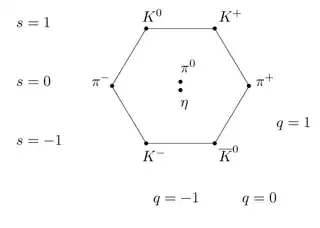The Standard Model contains three generations of quarks, and three generations of leptons. We generally pair off these generations into the "light" generation ($e, \nu_e, u, d$), the "medium" generation ($\mu, \nu_\mu, c, s$), and the "heavy" generation ($\tau, \nu_\tau, t, b$.)
Is the reason we do this just because of the relative masses of the particles? Or is there some underlying symmetry between the leptons & quarks that requires us to associate the electron with the up and down quarks? I know you have to have complete electroweak multiplets to cancel out the anomalies, but is there any reason other than mass that we don't pair $e$ and $\nu_e$ with $t$ and $b$?
To put it another way: If all of these particles had the same mass, would there be any reason to "pair off" the lepton and quark generations the way we currently do, or would any pairing of the generations be OK?
This is probably a basic fact that I learned in my QFT classes, about [mumble mumble] years ago, but I seem to have forgotten it if I ever learned it.
